What Factors Affect the Tensile Strength of Self-Drilling Anchor Bolts?
Time:2025-10-16From:sinorock View:
Self-drilling anchor bolts are a powerhouse in geotechnical engineering, tunneling, and mining support. These innovative tools combine drilling, installation, and grouting into one streamlined process, making them perfect for challenging ground conditions. Tensile strength—the maximum pulling force a bolt can withstand before failing—is the key to their performance. Understanding what drives this strength is critical for designing safe, efficient systems. In this article, we’ll dive into the main factors, offering practical insights for engineers and contractors based on real-world applications.
How Self-Drilling Anchor Bolts Work
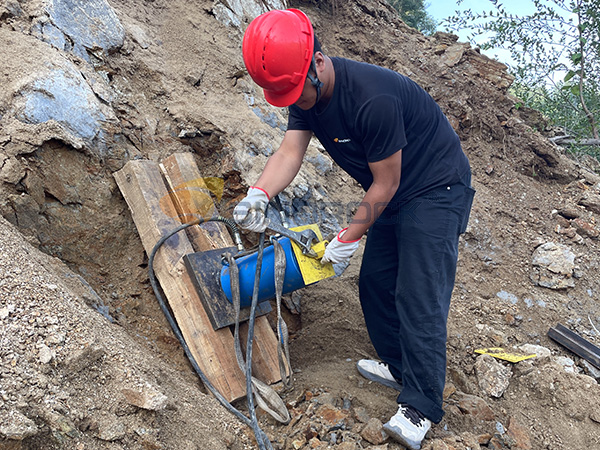
First, a quick overview of their mechanics. Self-drilling anchor bolts feature a hollow bar with an integrated drill bit. Using a specialized drilling rig, they’re drilled directly into rock or soil—no extra drill rod required. After drilling, grout (like cement slurry) is injected through the core, filling the hole and seeping into surrounding cracks to form a robust composite anchor body. The rock bolt’s strength comes from the friction between the hollow bar, grout, and surrounding material, effectively transferring loads.
The ultimate load—the point where the bolt fails under tension. This strength is shaped by factors like the bolt’s design, installation techniques, and the site’s geology. Let’s break down the top influences.
1. Bolt Diameter and Anchorage Length
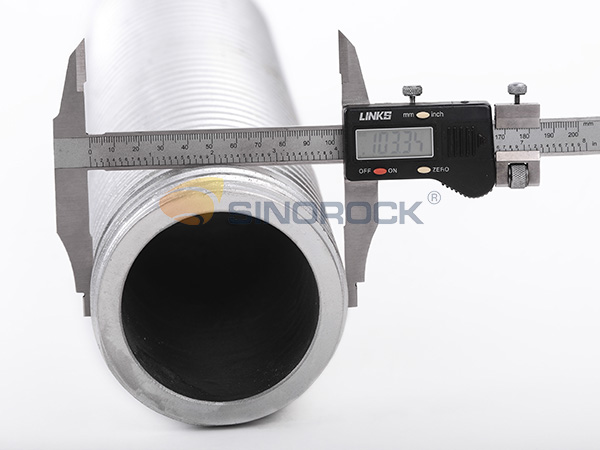
The diameter of the bolt and its anchorage length (the depth of the drilled hole) are foundational factors. A larger diameter increases the contact area with the grout and surrounding rock or soil, boosting frictional resistance. Similarly, a longer anchorage length distributes the load over a greater distance, enhancing stability under tension.
For example, in weak soil, upgrading from a 1-inch (25mm) diameter to a 1.25-inch (32mm) self-drilling anchor bolt can increase tensile strength by over 20%, significantly raising the ultimate load. During design, match these specs to your project’s load requirements. Too short, and the bolt may pull out; too long, and costs increase. Field testing is crucial to find the best spot for maximum strength.
2. Shear Strength of the Surrounding Ground
The shear strength of the rock or soil around the bolt is often the most critical external factor. This measures how well the ground resists sliding or deforming under stress. Higher shear strength means better grip between the anchor bar and the ground, leading to greater tensile strength.
The impact varies by different geological formations: Hard rock with shear strength 10MPa can support rock bolts exceeding 100kN with ease. In loose soil with under 5MPa, tensile strength might drop by 50%. Always conduct a thorough geological exploration—using drilling samples or shear tests—to assess this. Strategies like angling the hole for better pull-out resistance or drilling deeper into stable layers can boost tensile strength and reduce risks like ground movement.
3. Grouting Pressure
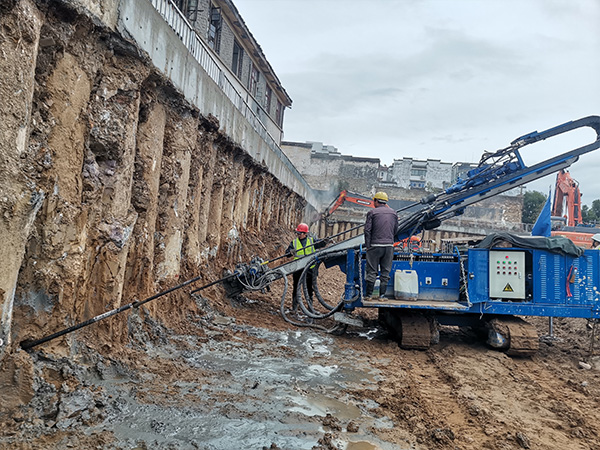
Grouting pressure directly affects how well the grout penetrates and bonds with the ground. Higher pressure drives the grout deeper into cracks, expanding the effective anchor diameter and improving friction with the surrounding material. Tests show that increasing pressure from 2MPa to 4MPa can lift the ultimate load by 15-30%.
However, more isn’t always better. Beyond 4MPa, additional benefits taper off, and may wasting grout or disturbing the ground. In practice, aim for 2-4MPa, depending on equipment and the ground’s permeability. Pair high-pressure pumps with real-time monitoring to maximize utilization this factor, ensuring strong tensile performance even in tough conditions.
4. Anchor Bar Wall Thickness
Wall thickness, alongside diameter, determines the bolt’s structural integrity. Thicker walls can handle greater tensile stress, reducing the risk of deformation or fracture. Increasing thickness from 3mm to 5mm might boost the ultimate load by 10-20%, especially in high-load applications like tunnel roof support.
When choosing thickness, balance strength with cost. Too thin, may risk fatigue failure; too thick, will adding unnecessary weight and expense. Most self-drilling anchor bolts use high-strength steel (like R32 or R51 grades). Tools can simulate how thickness affects tensile strength under specific conditions.
5. Material Quality and Composition
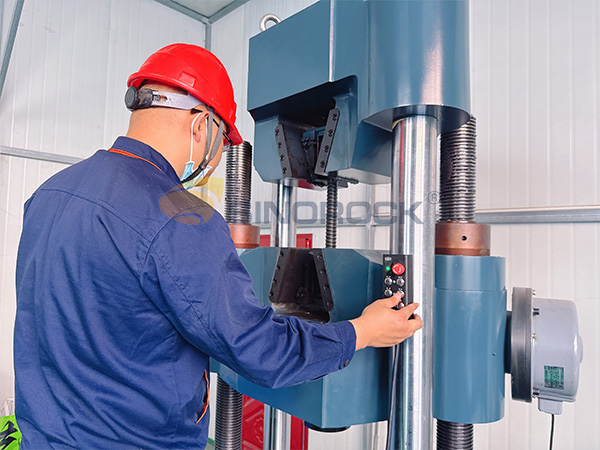
The steel used in self-drilling anchor bolts plays a pivotal role. High-strength alloys, such as those meeting ASTM A615 or EN 10080 standards, offer superior yield strength (often exceeding 500MPa) and corrosion resistance, which are critical for long-term performance. Corrosion, especially in environments with high moisture or chemical exposure, can weaken the bolt over time, reducing tensile strength by up to 15% in extreme cases. Applying protective coatings or using stainless steel variants can mitigate this risk, particularly in coastal or acidic soils.
6. Installation and Craftsmanship
The quality of installation directly impacts performance. Inaccurate drilling—such as misalignment or inconsistent depth—can reduce the contact area between the anchor bar and grout, lowering friction and tensile strength. Uneven grouting, caused by improper mixing or inadequate equipment, may create voids in the anchor bar body, weakening it by 10-20%. Using automated drilling rigs and real-time grout systems ensures precision and consistency, maximizing strength.
7. Environmental Conditions
External factors like groundwater, temperature fluctuations, and seismic activity can affect tensile strength. Groundwater can erode grout over time, reducing bond strength by up to 25% in saturated soils. Freeze-thaw cycles in cold climates may crack the grout, weakening the anchor body. In seismic zones, dynamic loading can exacerbate stress concentrations.
These factors often interact in complex ways. For example, high-quality steel in a corrosive environment may still fail if grouting is uneven. Comprehensive site analysis and quality control during installation are essential to address these variables effectively.
How to Optimize Tensile Strength
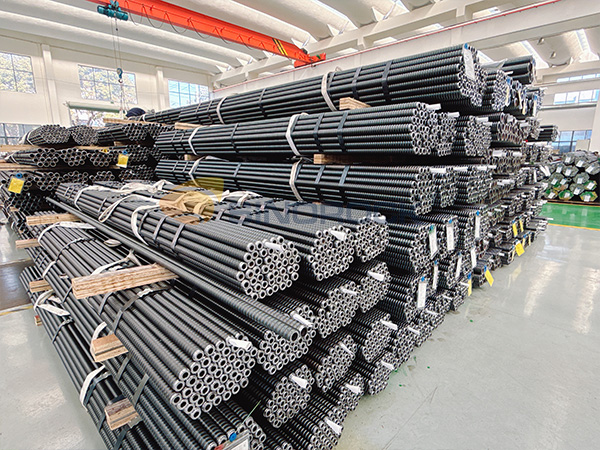
To maximize tensile strength, take a comprehensive approach: Start with site assessments and load calculations, select the right self-drilling anchor bolt specs, and validate with pull-out tests. Standards like ASTM or EN provide safety guidelines to follow.
Conclusion
The tensile strength of self-drilling anchor bolts hinges on diameter and length, ground shear strength, grouting pressure, and wall thickness. Mastering these factors ensures stronger, safer projects in tunneling, slopes, or foundation work. Their adaptability shines in tough conditions, but smart design is key. If you’re an engineer, consult SINOROCK for tailored solutions.
latest news
-
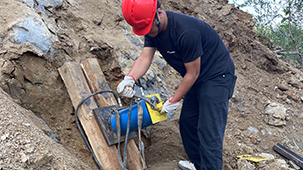
- What Factors Affect the Tensile Strength of Self-Drilling Anchor Bolts?
- Time:2025-10-16From:This Site
- Discover the key factors affecting the tensile strength of self-drilling anchor bolts: diameter, length, shear strength, grouting pressure, and wall thickness. Learn how to optimize for safer tunneling and slope projects!
- View details
-
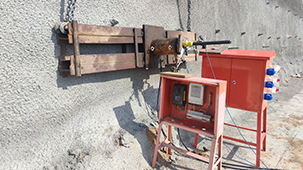
- Ultimate Load and Tensile Strength of Self-Drilling Hollow Core Rock Bolts
- Time:2025-09-26From:This Site
- Explains self-drilling hollow core rock bolt support mechanism, focusing on the distinction between ultimate load and tensile strength. It covers material testing, safety factor selection, and on-site validation steps. Learn how to optimize bolt selection through geological analysis, pullout testing, and cost efficiency for safe, reliable engineering.
- View details
-
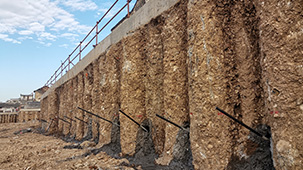
- Self-Drilling Anchor Bars in Foundation Support: Applications and Benefits
- Time:2025-09-24From:This Site
- Self-drilling anchor bars in proactive support, deformation control, and composite support systems, as well as their significant advantages over traditional anchors in challenging strata like sandy or pebble layers.
- View details
-
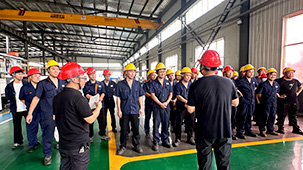
- Sinorock 2025 Quality Month | Strengthening Quality Foundations, Empowering Product Excellence
- Time:2025-08-13From:This Site
- Sinorock’s 2025 Quality Month, themed “Strengthening Quality Foundations, Empowering Product Excellence,” successfully concluded, reinforcing our commitment to superior product quality.
- View details
-
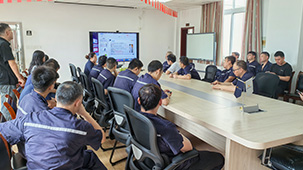
- Sinorock Safety Month 2025 | Everyone Speaks Safety, Everyone Can Respond
- Time:2025-07-03From:This Site
- Sinorock Safety Month 2025, centered on the theme "Everyone Speaks Safety, Everyone Can Respond - Spot Workplace Hazards," has wrapped up successfully!
- View details
-
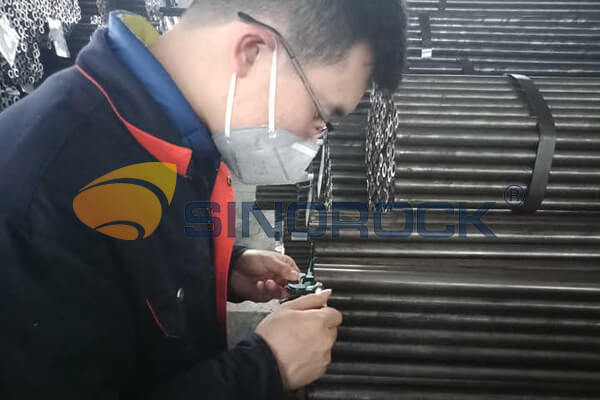
- Quality Control: the Vital Factor of A SDA Bolt Factory
- Time:2025-01-09From:This Site
- Sinorock’s comprehensive quality control system, from supplier management to outgoing inspections, ensuring the highest standards for self-drilling anchor bolts in construction.
- View details
-

- SINOROCK to Showcase Innovative Mining Solutions at Mining and Metals Central Asia 2025
- Time:2025-09-09From:This Site
- We are pleased to share that SINOROCK will participate in the Mining and Metals Central Asia 2025, taking place from September 17 to 19 at the Atakent International Exhibition Centre in Almaty, Kazakhstan. You can find us at Booth 11-231.
- View details
-

- Sinorock Invites You to Explore Proven Self-Drilling Anchor Bolt Solutions at bauma 2025
- Time:2025-03-07From:This Site
- From April 7–13, 2025, explore Sinorock’s Self-drilling anchor bolt solution at Booth C2.513/4 in Hall C2 of the Messe München Exhibition Center (Munich, Germany).
- View details
-
.jpg)
- SINOROCK to Attend EXPOMINA PERÚ 2024 in Lima, Peru
- Time:2024-08-10From:This Site
- Sinorock to Attend EXPOMINA PERÚ 2024 in Lima, Peru
- View details
 Download
Download 


